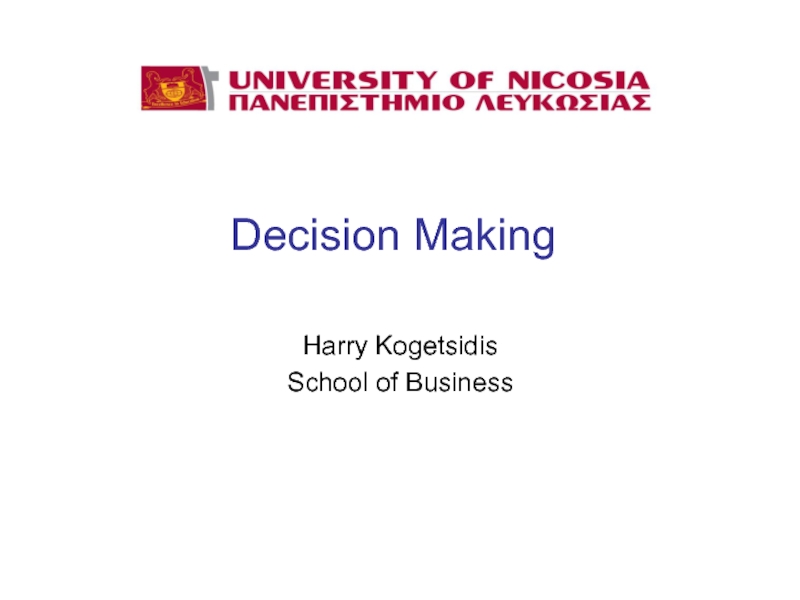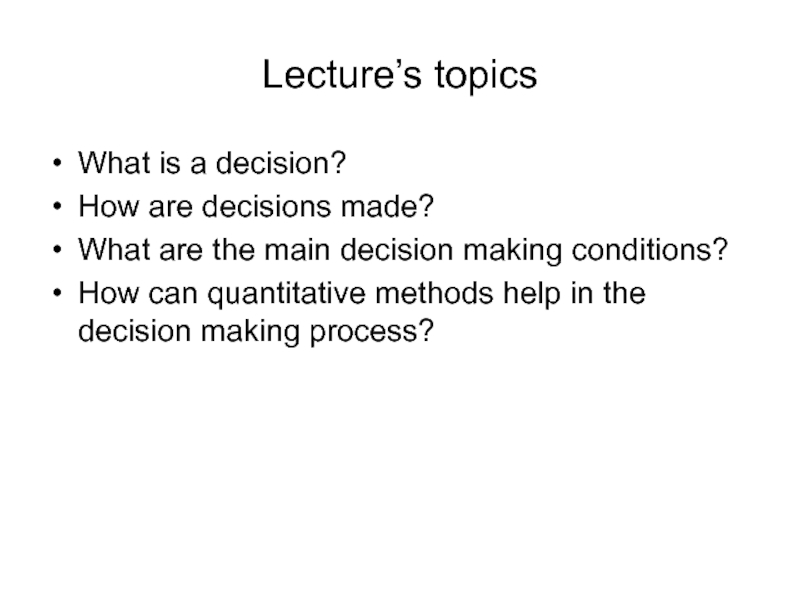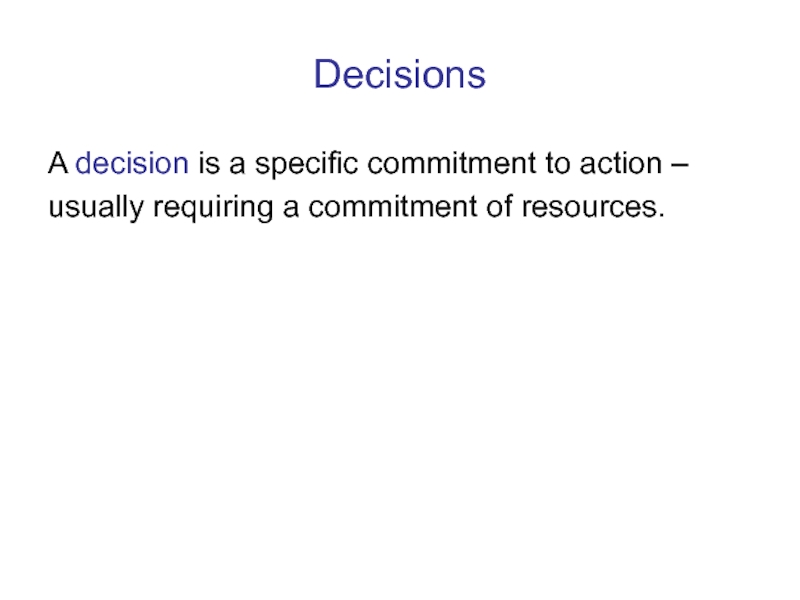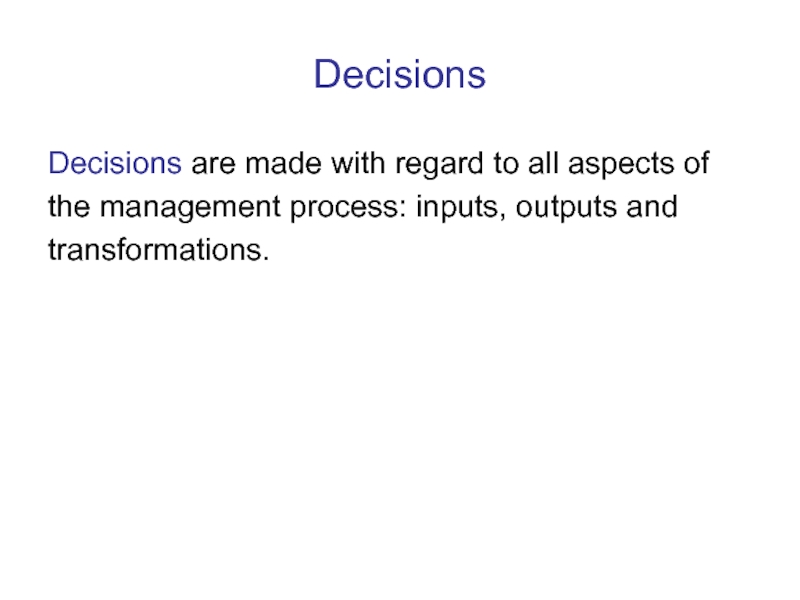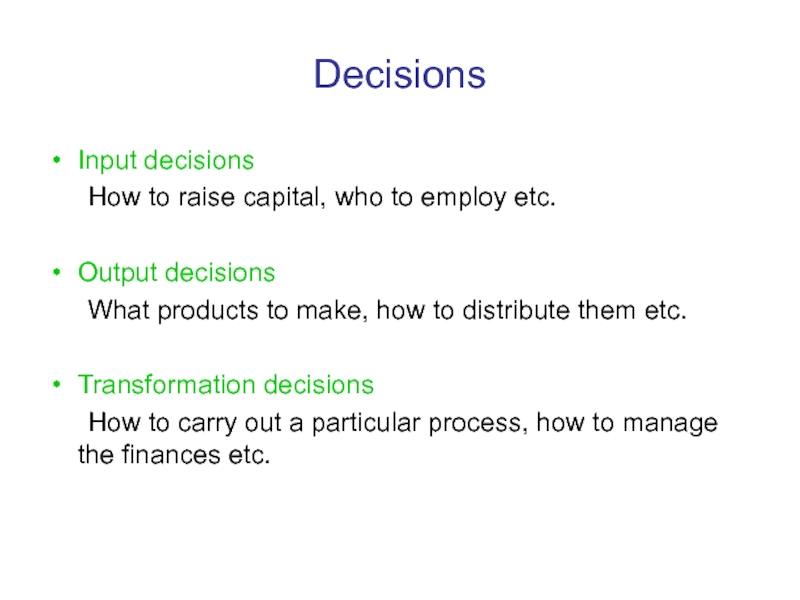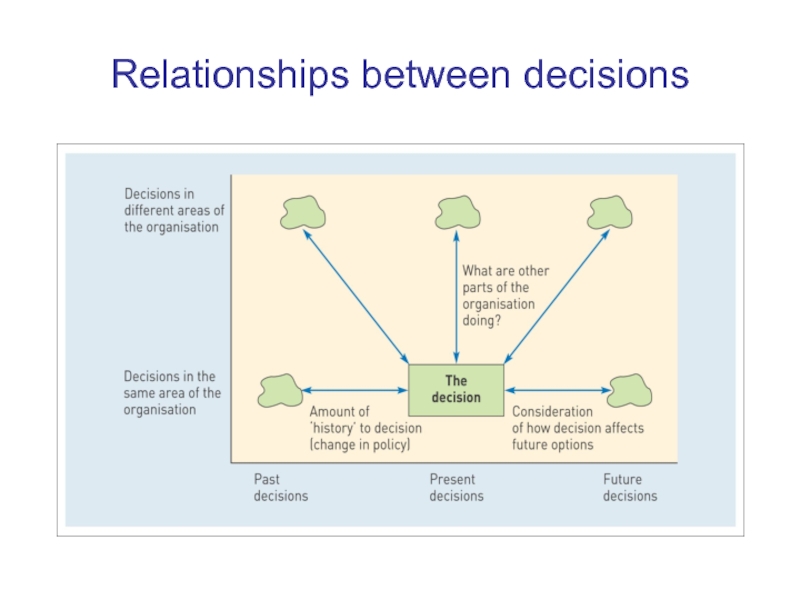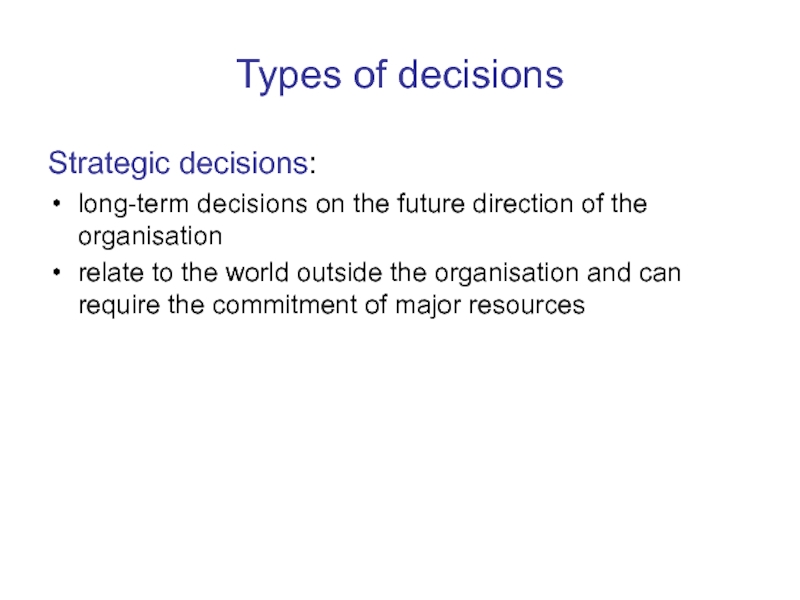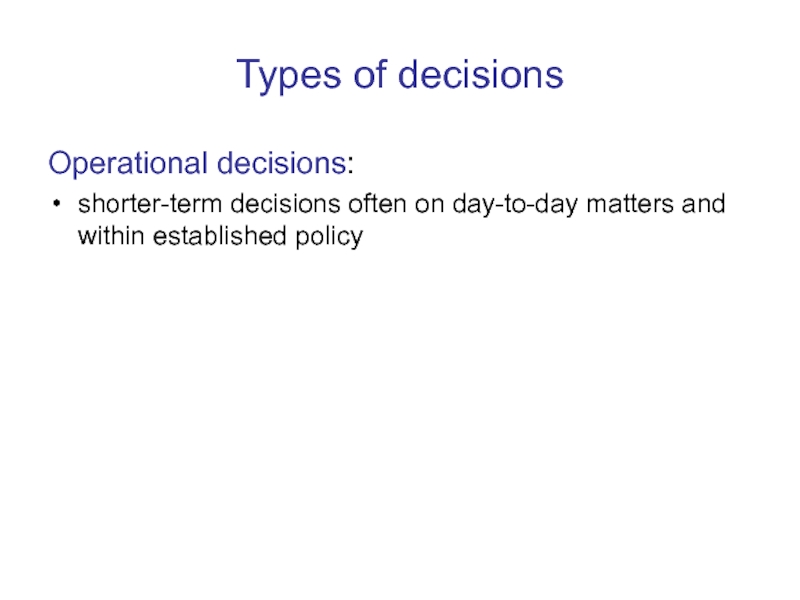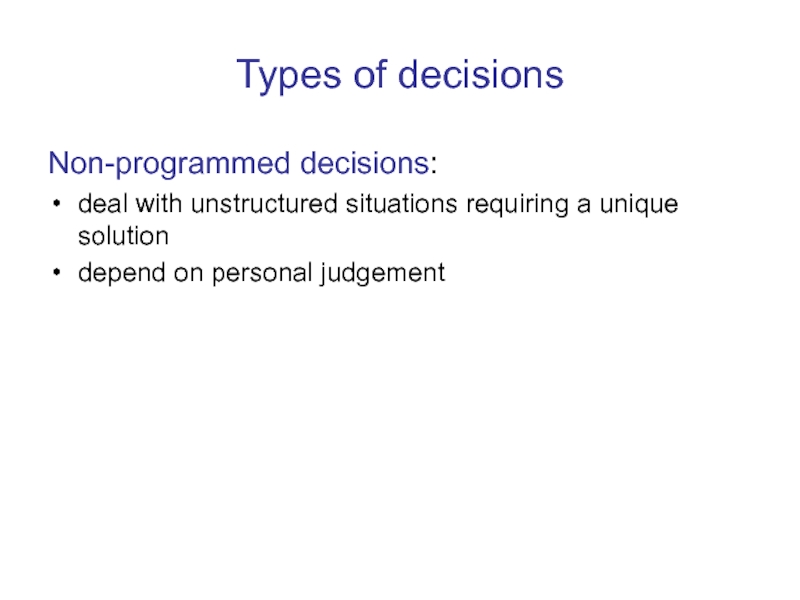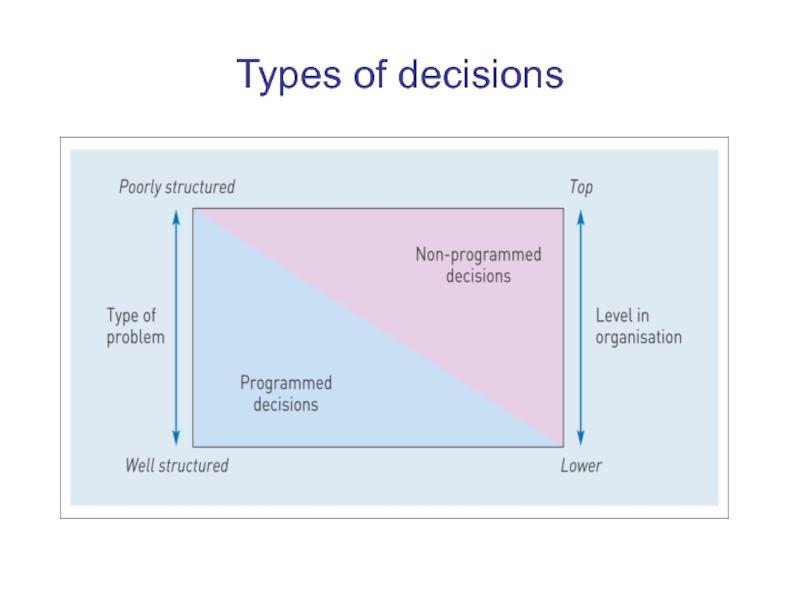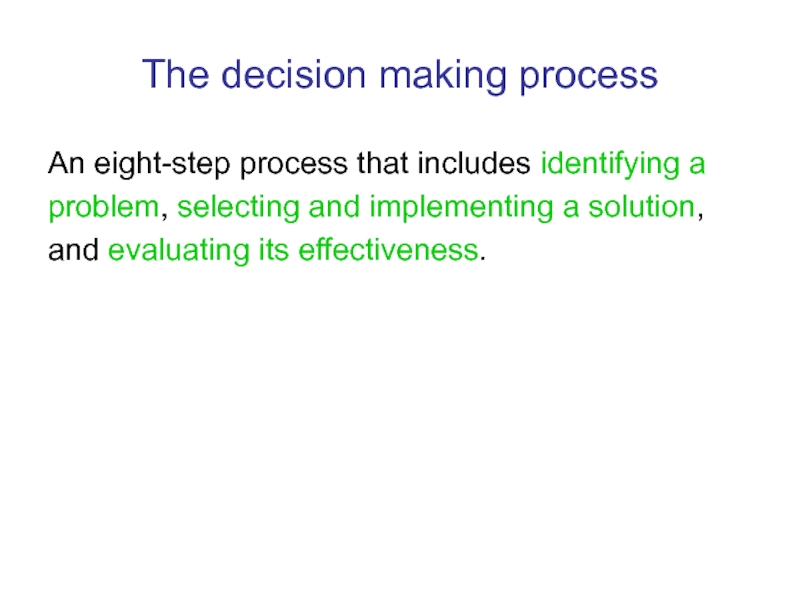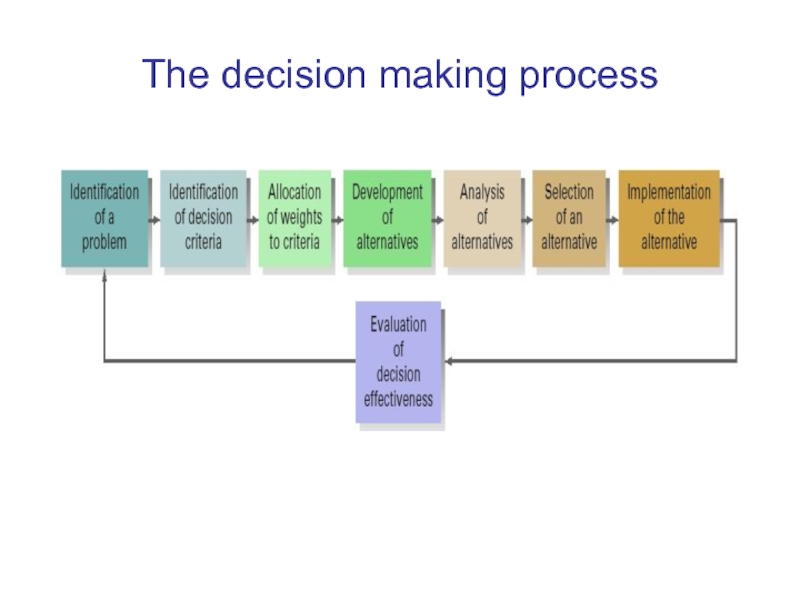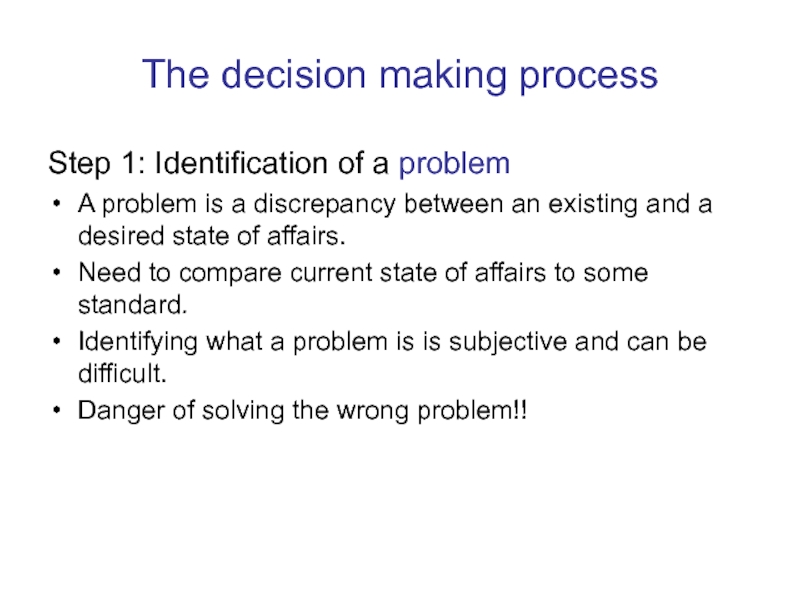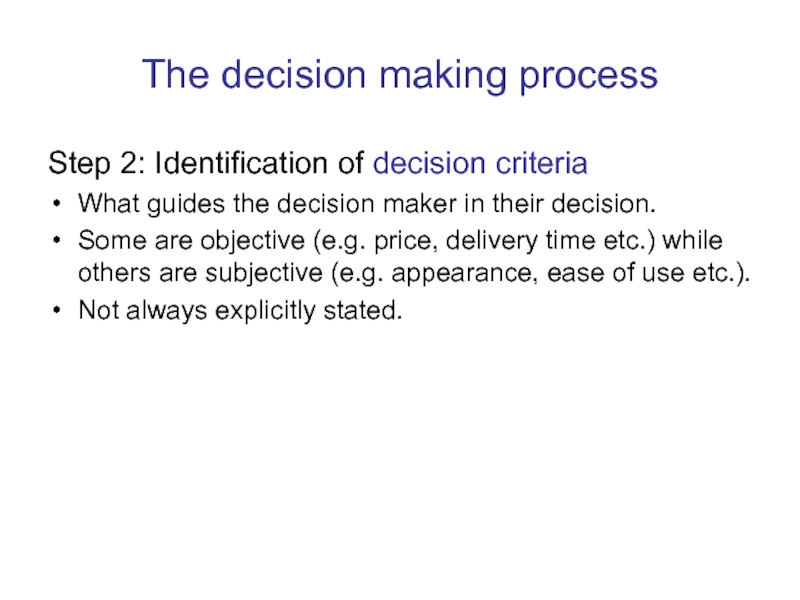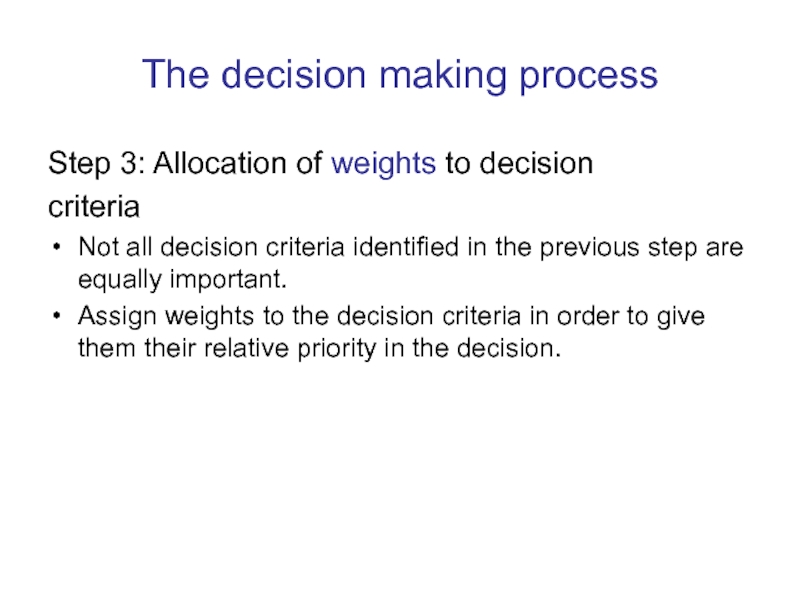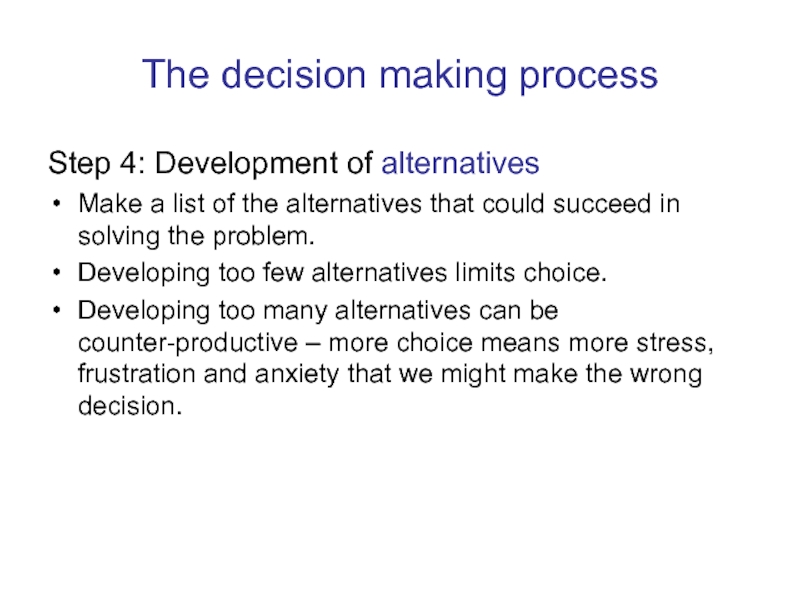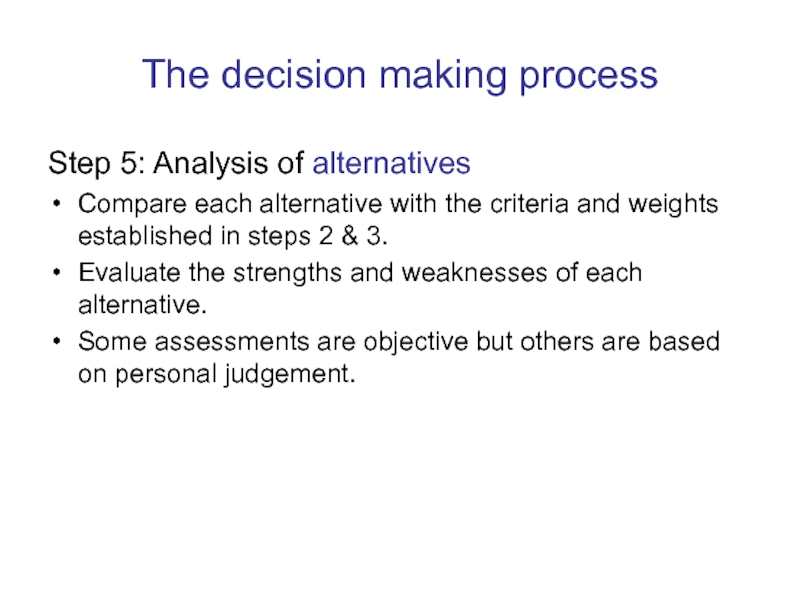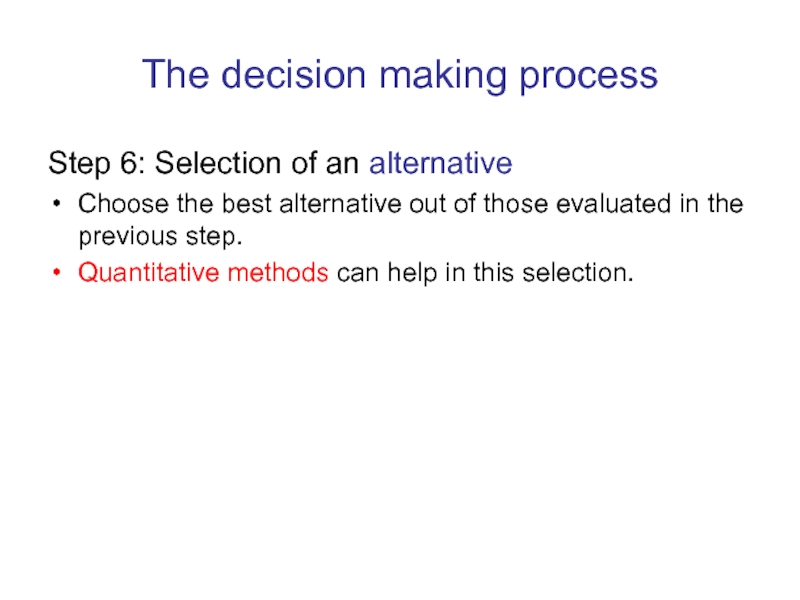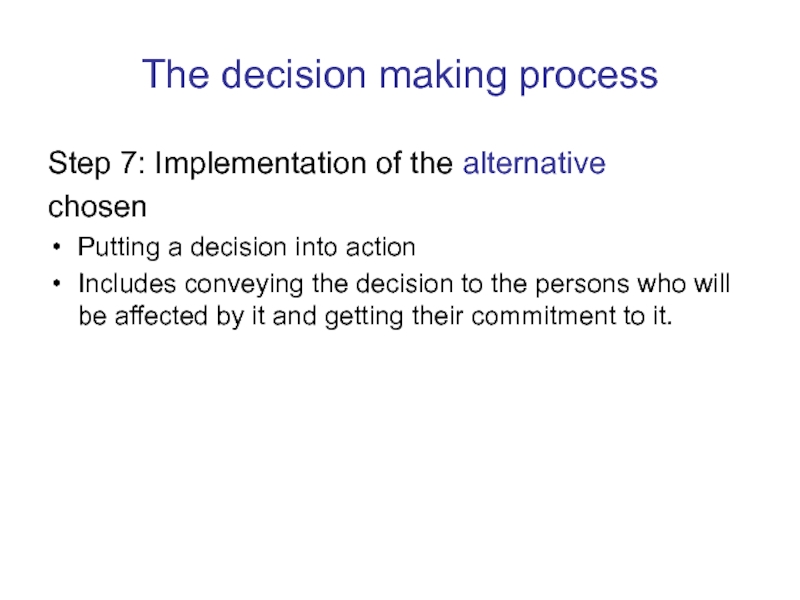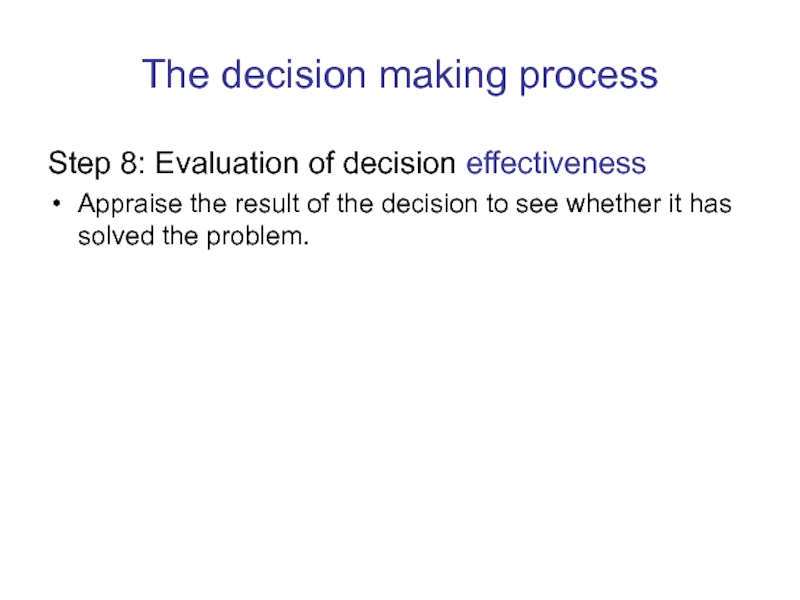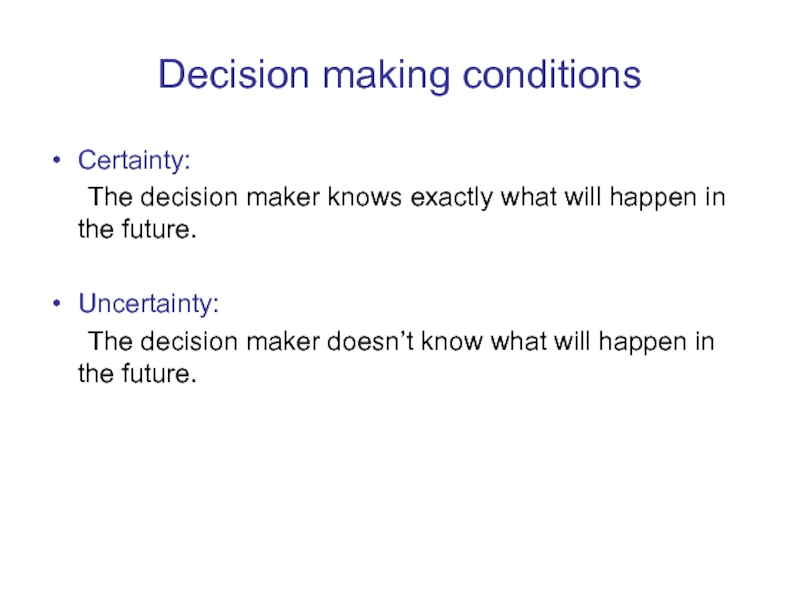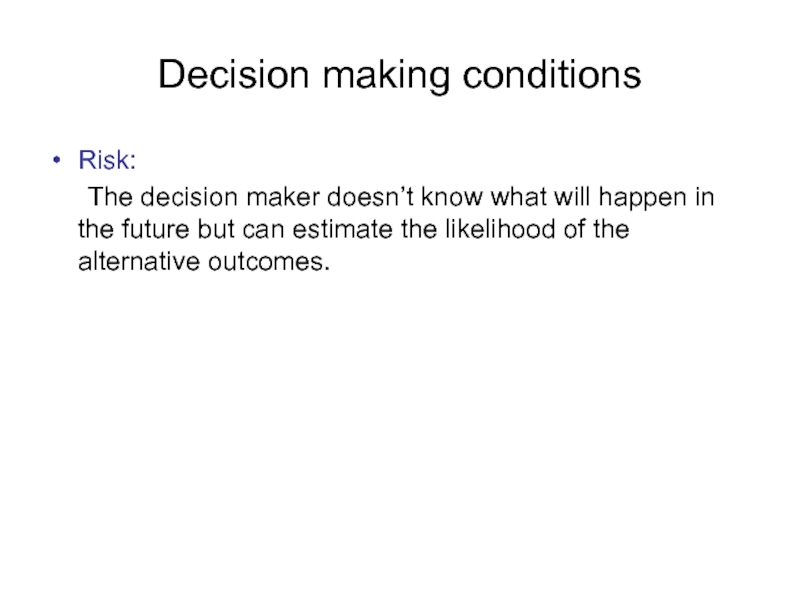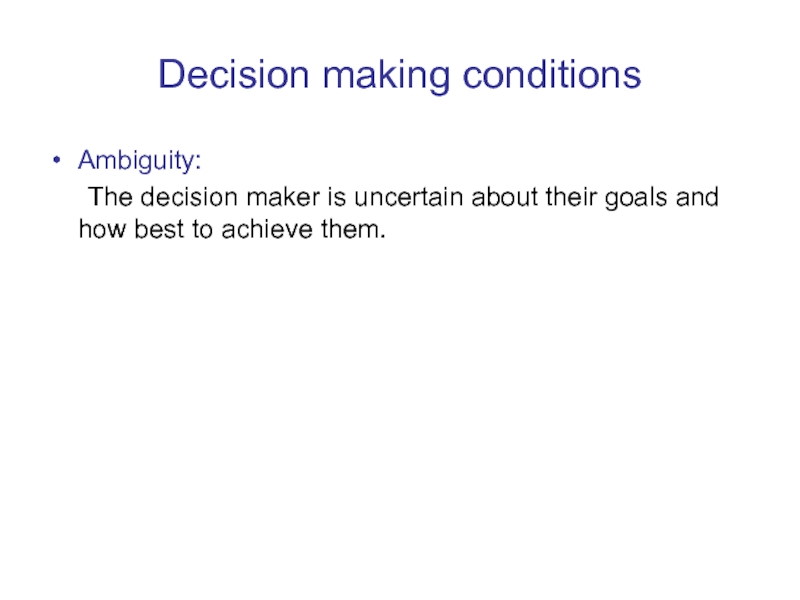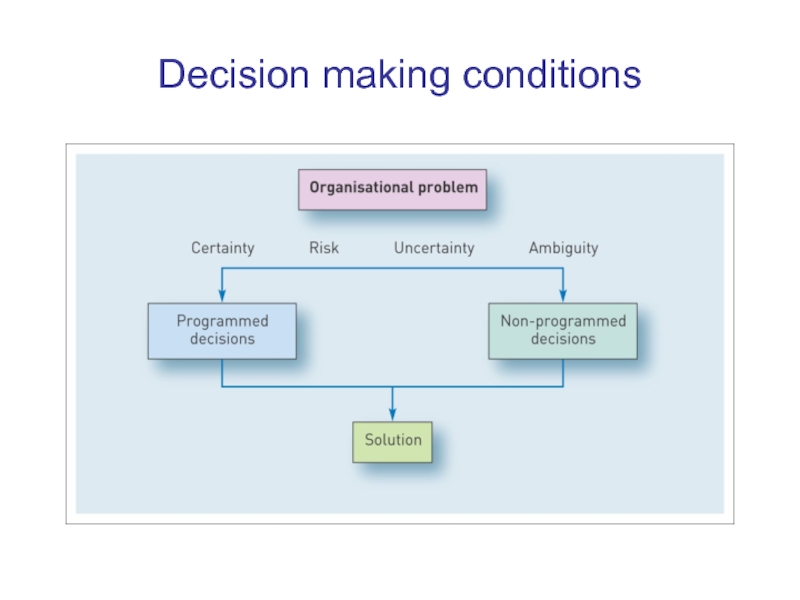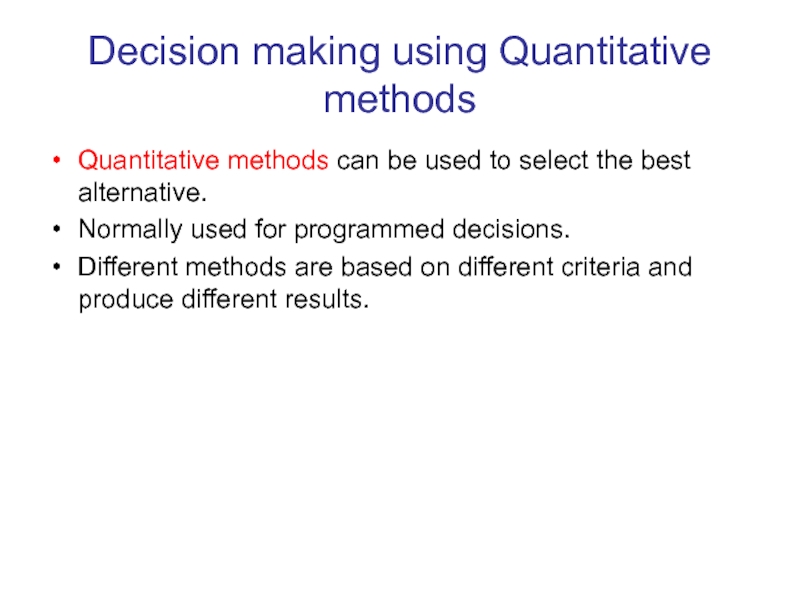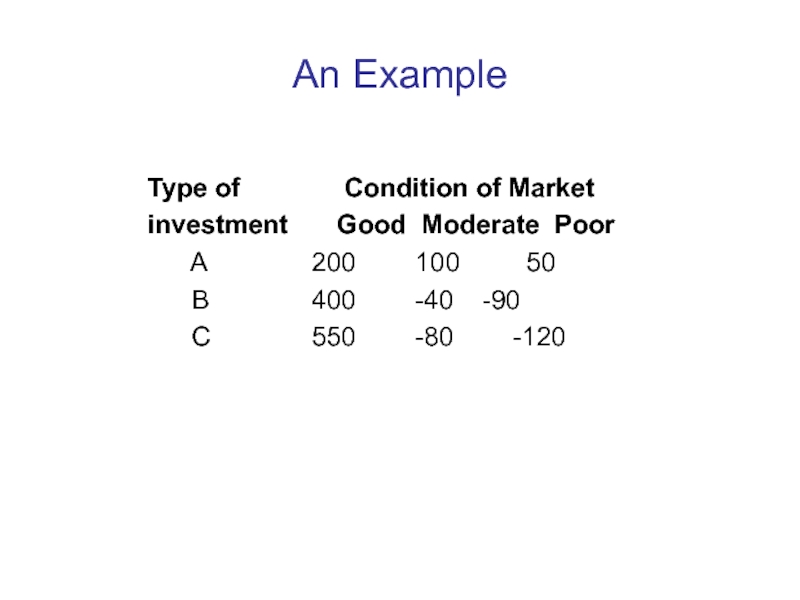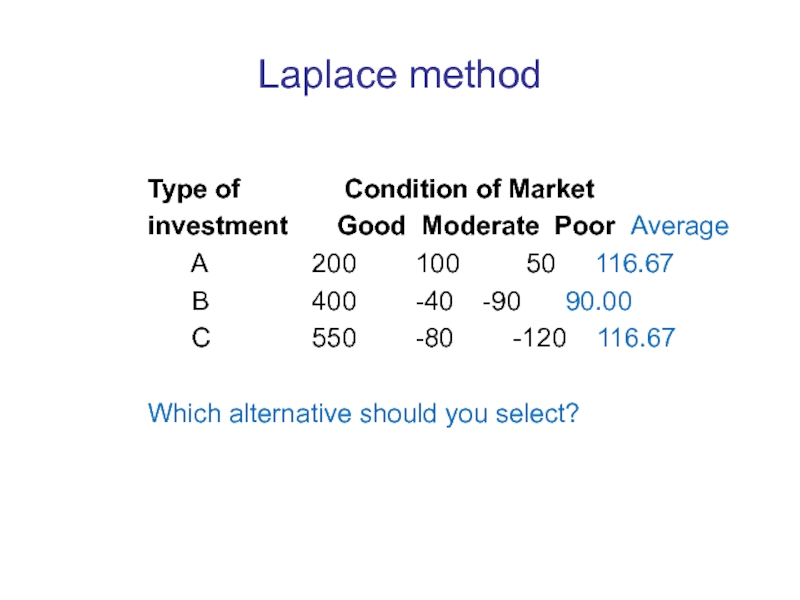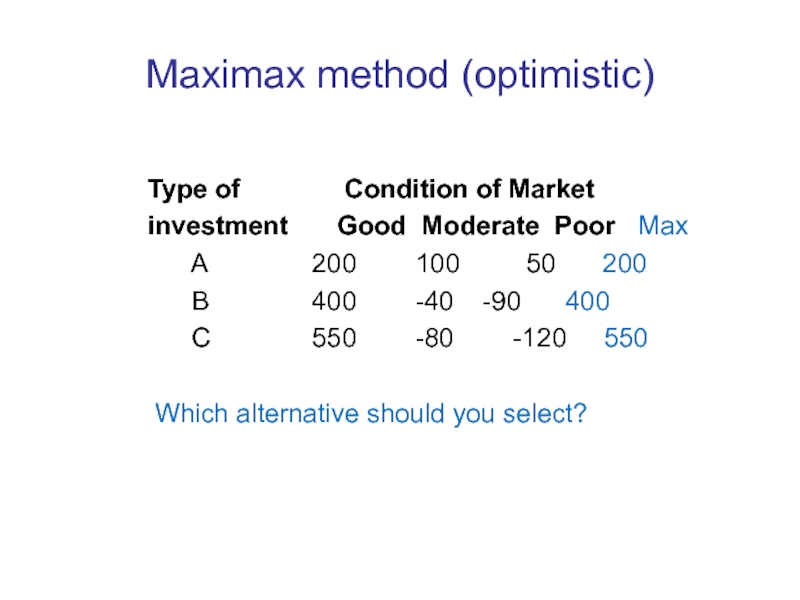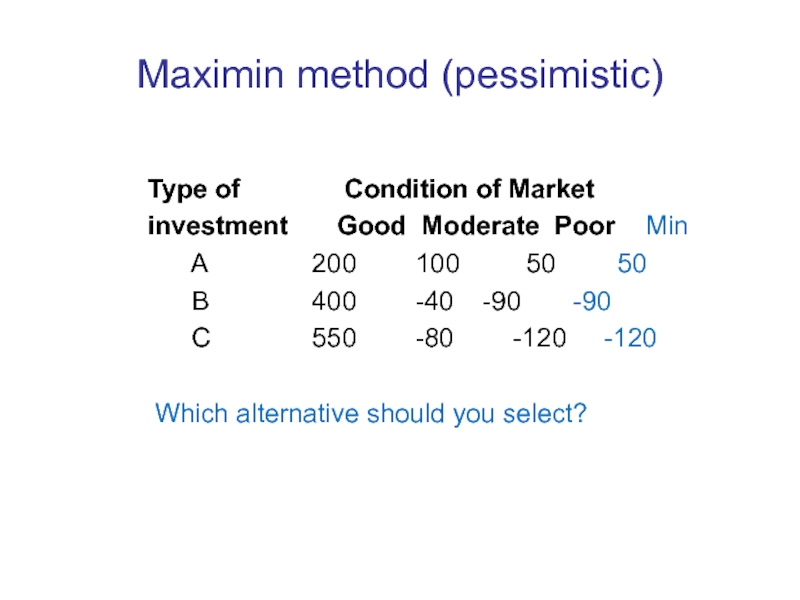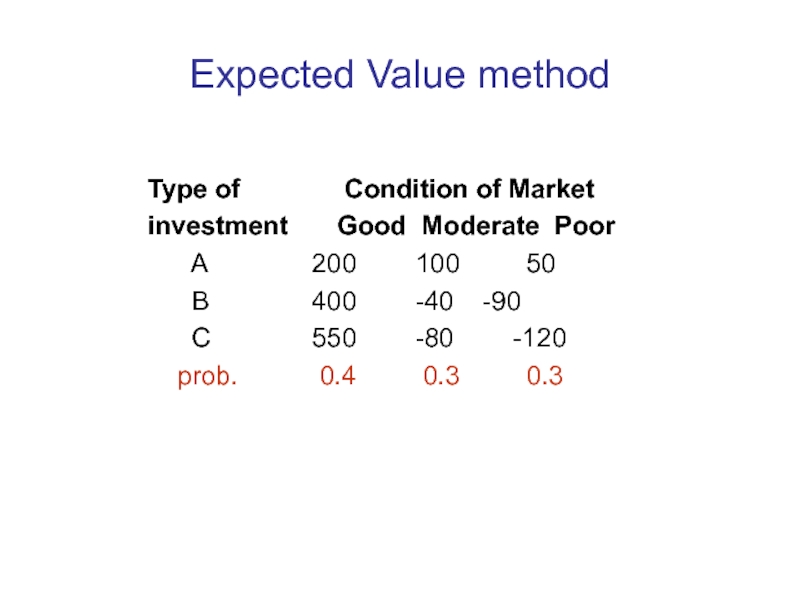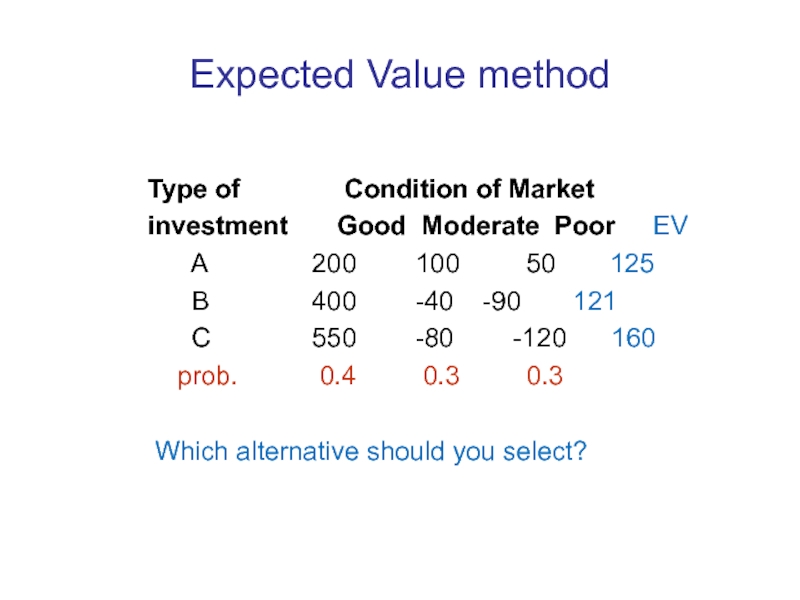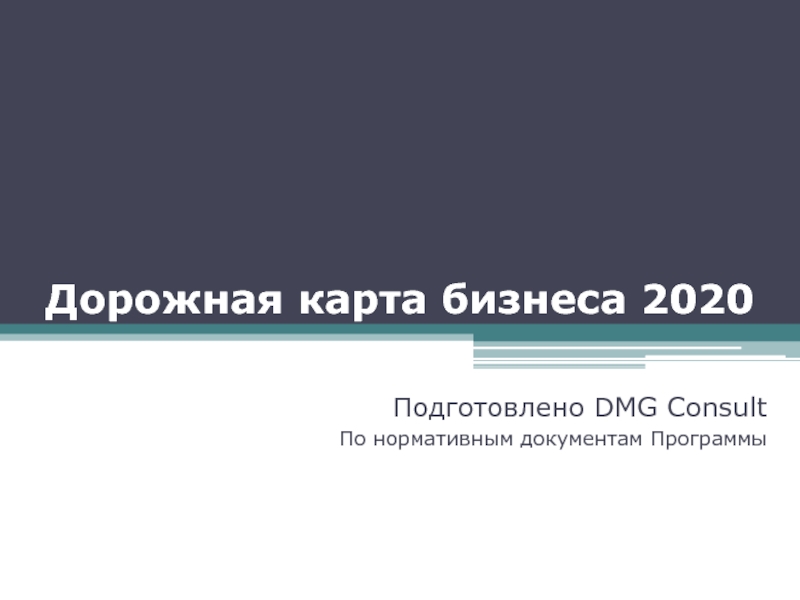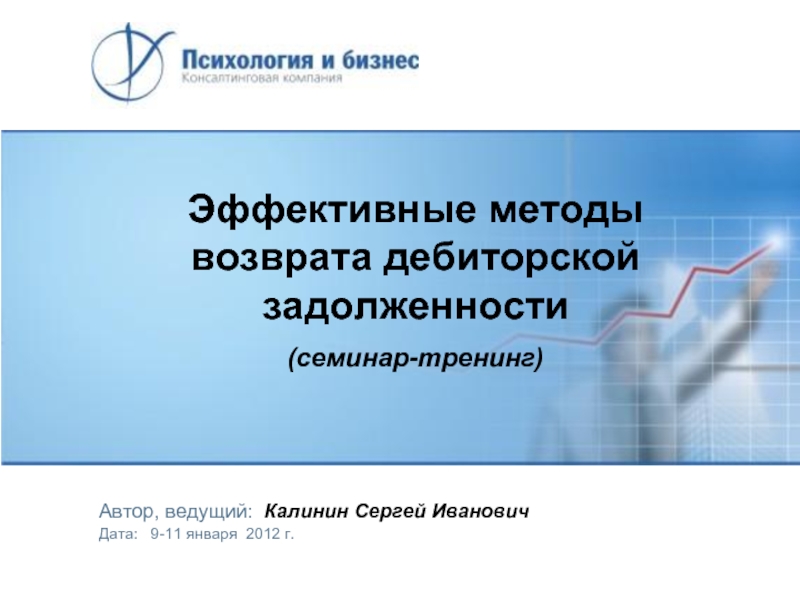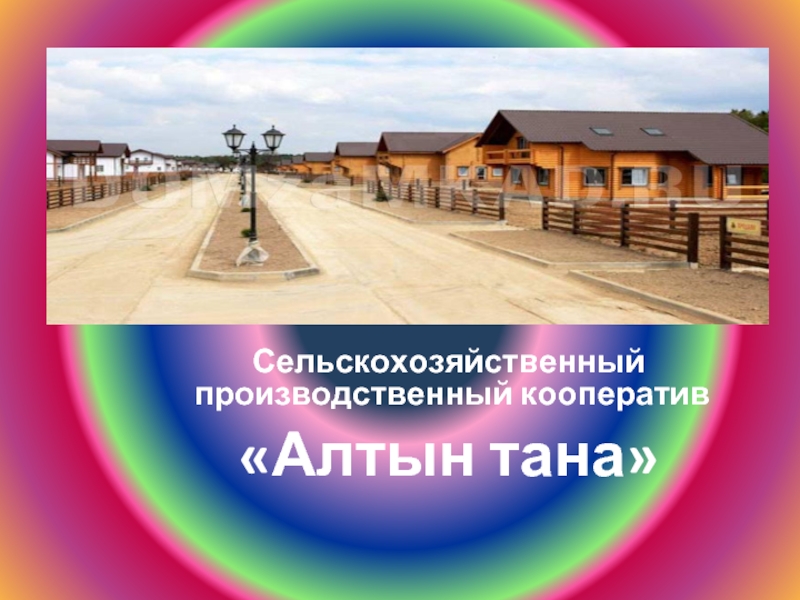- Главная
- Разное
- Дизайн
- Бизнес и предпринимательство
- Аналитика
- Образование
- Развлечения
- Красота и здоровье
- Финансы
- Государство
- Путешествия
- Спорт
- Недвижимость
- Армия
- Графика
- Культурология
- Еда и кулинария
- Лингвистика
- Английский язык
- Астрономия
- Алгебра
- Биология
- География
- Детские презентации
- Информатика
- История
- Литература
- Маркетинг
- Математика
- Медицина
- Менеджмент
- Музыка
- МХК
- Немецкий язык
- ОБЖ
- Обществознание
- Окружающий мир
- Педагогика
- Русский язык
- Технология
- Физика
- Философия
- Химия
- Шаблоны, картинки для презентаций
- Экология
- Экономика
- Юриспруденция
Decision Making презентация
Содержание
- 1. Decision Making
- 2. Lecture’s topics What is a
- 3. Decisions A decision is a specific
- 4. Decisions Decisions are made with regard
- 5. Decisions Input decisions How to raise
- 6. Relationships between decisions
- 7. Types of decisions Strategic decisions:
- 8. Types of decisions Operational decisions:
- 9. Types of decisions Programmed decisions:
- 10. Types of decisions Non-programmed decisions:
- 11. Types of decisions
- 12. Student activity Think of an important
- 13. The decision making process An eight-step
- 14. The decision making process
- 15. The decision making process Step 1:
- 16. The decision making process Step 2:
- 17. The decision making process Step 3:
- 18. The decision making process Step 4:
- 19. The decision making process Step 5:
- 20. The decision making process Step 6:
- 21. The decision making process Step 7:
- 22. The decision making process Step 8:
- 23. Decision making conditions Certainty: The decision
- 24. Decision making conditions Risk: The decision maker
- 25. Decision making conditions Ambiguity: The decision
- 26. Decision making conditions
- 27. Decision making using Quantitative methods Quantitative
- 28. An Example Type of
- 29. Laplace method Type of
- 30. Maximax method (optimistic) Type of
- 31. Maximin method (pessimistic) Type of
- 32. Expected Value method Type of
- 33. Expected Value method Type of
Слайд 2
Lecture’s topics
What is a decision?
How are decisions made?
What are the
main decision making conditions?
How can quantitative methods help in the decision making process?
How can quantitative methods help in the decision making process?
Слайд 3
Decisions
A decision is a specific commitment to action –
usually requiring
a commitment of resources.
Слайд 4
Decisions
Decisions are made with regard to all aspects of
the management
process: inputs, outputs and
transformations.
transformations.
Слайд 5
Decisions
Input decisions
How to raise capital, who to employ etc.
Output decisions
What products
to make, how to distribute them etc.
Transformation decisions
How to carry out a particular process, how to manage the finances etc.
Transformation decisions
How to carry out a particular process, how to manage the finances etc.
Слайд 7
Types of decisions
Strategic decisions:
long-term decisions on the future direction of the
organisation
relate to the world outside the organisation and can require the commitment of major resources
relate to the world outside the organisation and can require the commitment of major resources
Слайд 8
Types of decisions
Operational decisions:
shorter-term decisions often on day-to-day matters and within
established policy
Слайд 9
Types of decisions
Programmed decisions:
deal with familiar problems or with well structured
situations
are based on established procedures or policies
often handled by computers
are based on established procedures or policies
often handled by computers
Слайд 10
Types of decisions
Non-programmed decisions:
deal with unstructured situations requiring a unique solution
depend
on personal judgement
Слайд 12
Student activity
Think of an important decision that you have taken
sometime
in your life. Then answer the following:
Why did you have to take a decision in this case?
What were your alternative options?
What factors did you consider when you took your decision?
Did you make the right decision?
Why did you have to take a decision in this case?
What were your alternative options?
What factors did you consider when you took your decision?
Did you make the right decision?
Слайд 13
The decision making process
An eight-step process that includes identifying a
problem,
selecting and implementing a solution,
and evaluating its effectiveness.
and evaluating its effectiveness.
Слайд 15
The decision making process
Step 1: Identification of a problem
A problem is
a discrepancy between an existing and a desired state of affairs.
Need to compare current state of affairs to some standard.
Identifying what a problem is is subjective and can be difficult.
Danger of solving the wrong problem!!
Need to compare current state of affairs to some standard.
Identifying what a problem is is subjective and can be difficult.
Danger of solving the wrong problem!!
Слайд 16
The decision making process
Step 2: Identification of decision criteria
What guides the
decision maker in their decision.
Some are objective (e.g. price, delivery time etc.) while others are subjective (e.g. appearance, ease of use etc.).
Not always explicitly stated.
Some are objective (e.g. price, delivery time etc.) while others are subjective (e.g. appearance, ease of use etc.).
Not always explicitly stated.
Слайд 17
The decision making process
Step 3: Allocation of weights to decision
criteria
Not all
decision criteria identified in the previous step are equally important.
Assign weights to the decision criteria in order to give them their relative priority in the decision.
Assign weights to the decision criteria in order to give them their relative priority in the decision.
Слайд 18
The decision making process
Step 4: Development of alternatives
Make a list of
the alternatives that could succeed in solving the problem.
Developing too few alternatives limits choice.
Developing too many alternatives can be counter-productive – more choice means more stress, frustration and anxiety that we might make the wrong decision.
Developing too few alternatives limits choice.
Developing too many alternatives can be counter-productive – more choice means more stress, frustration and anxiety that we might make the wrong decision.
Слайд 19
The decision making process
Step 5: Analysis of alternatives
Compare each alternative with
the criteria and weights established in steps 2 & 3.
Evaluate the strengths and weaknesses of each alternative.
Some assessments are objective but others are based on personal judgement.
Evaluate the strengths and weaknesses of each alternative.
Some assessments are objective but others are based on personal judgement.
Слайд 20
The decision making process
Step 6: Selection of an alternative
Choose the best
alternative out of those evaluated in the previous step.
Quantitative methods can help in this selection.
Quantitative methods can help in this selection.
Слайд 21
The decision making process
Step 7: Implementation of the alternative
chosen
Putting a
decision into action
Includes conveying the decision to the persons who will be affected by it and getting their commitment to it.
Includes conveying the decision to the persons who will be affected by it and getting their commitment to it.
Слайд 22
The decision making process
Step 8: Evaluation of decision effectiveness
Appraise the result
of the decision to see whether it has solved the problem.
Слайд 23
Decision making conditions
Certainty:
The decision maker knows exactly what will happen in
the future.
Uncertainty:
The decision maker doesn’t know what will happen in the future.
Uncertainty:
The decision maker doesn’t know what will happen in the future.
Слайд 24Decision making conditions
Risk:
The decision maker doesn’t know what will happen in
the future but can estimate the likelihood of the alternative outcomes.
Слайд 25
Decision making conditions
Ambiguity:
The decision maker is uncertain about their goals and
how best to achieve them.
Слайд 27
Decision making using Quantitative methods
Quantitative methods can be used to select
the best alternative.
Normally used for programmed decisions.
Different methods are based on different criteria and produce different results.
Normally used for programmed decisions.
Different methods are based on different criteria and produce different results.
Слайд 28
An Example
Type of Condition of Market
investment Good Moderate Poor
A 200 100 50
B 400 -40 -90
C 550 -80 -120
A 200 100 50
B 400 -40 -90
C 550 -80 -120
Слайд 29
Laplace method
Type of Condition of Market
investment Good Moderate Poor Average
A 200 100 50 116.67
B 400 -40 -90 90.00
C 550 -80 -120 116.67
Which alternative should you select?
A 200 100 50 116.67
B 400 -40 -90 90.00
C 550 -80 -120 116.67
Which alternative should you select?
Слайд 30
Maximax method (optimistic)
Type of Condition of
Market
investment Good Moderate Poor Max
A 200 100 50 200
B 400 -40 -90 400
C 550 -80 -120 550
Which alternative should you select?
investment Good Moderate Poor Max
A 200 100 50 200
B 400 -40 -90 400
C 550 -80 -120 550
Which alternative should you select?
Слайд 31
Maximin method (pessimistic)
Type of Condition of
Market
investment Good Moderate Poor Min
A 200 100 50 50
B 400 -40 -90 -90
C 550 -80 -120 -120
Which alternative should you select?
investment Good Moderate Poor Min
A 200 100 50 50
B 400 -40 -90 -90
C 550 -80 -120 -120
Which alternative should you select?
Слайд 32
Expected Value method
Type of Condition of
Market
investment Good Moderate Poor
A 200 100 50
B 400 -40 -90
C 550 -80 -120
prob. 0.4 0.3 0.3
investment Good Moderate Poor
A 200 100 50
B 400 -40 -90
C 550 -80 -120
prob. 0.4 0.3 0.3
Слайд 33
Expected Value method
Type of Condition of
Market
investment Good Moderate Poor EV
A 200 100 50 125
B 400 -40 -90 121
C 550 -80 -120 160
prob. 0.4 0.3 0.3
Which alternative should you select?
investment Good Moderate Poor EV
A 200 100 50 125
B 400 -40 -90 121
C 550 -80 -120 160
prob. 0.4 0.3 0.3
Which alternative should you select?
